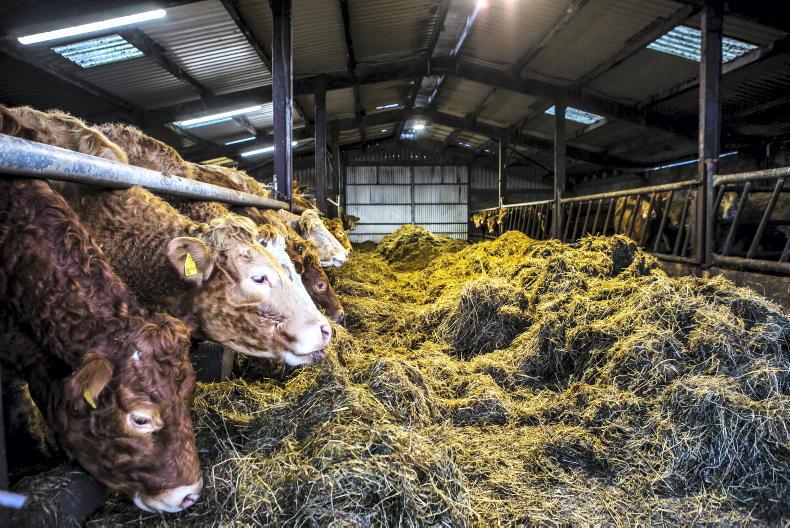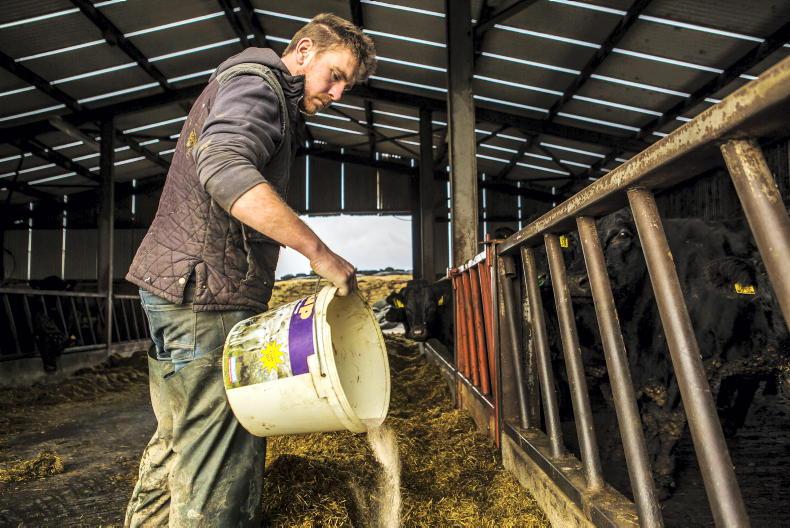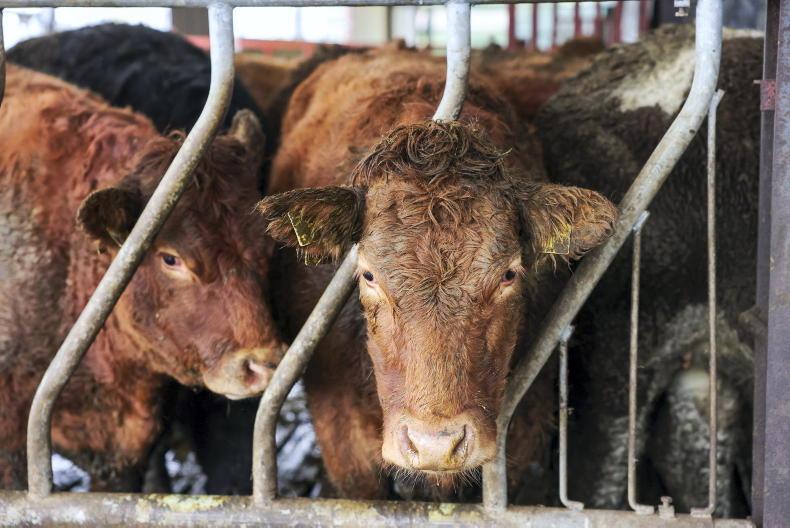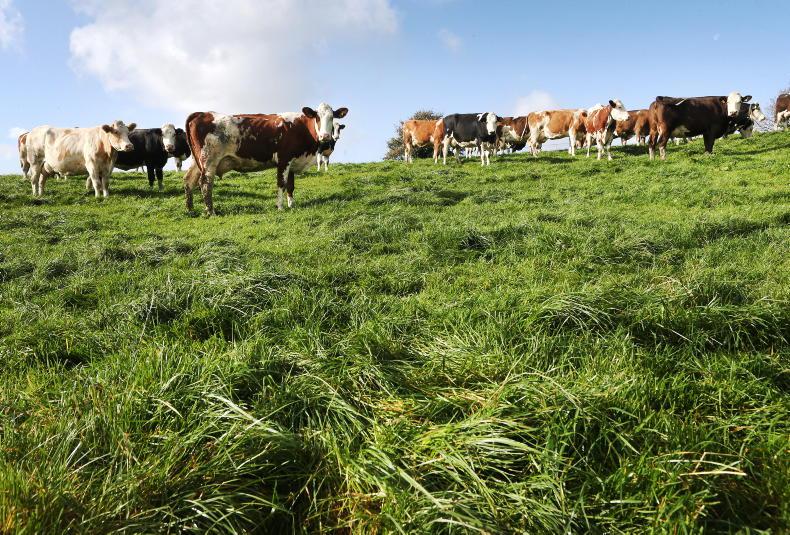Spring calving is fast approaching and farmers should be making preparations for the next calf crop to hit the group.
In the run-up to calving, there are some management tasks that can help things run more smoothly at calving time.
Some of the best tips are outlined as follows.
1. Only feed cows late in evening
Feeding cows late in the evening can help to delay the onset of labour, thereby reducing the number of cows calving through the night.
It won’t work for everyone, but there are plenty of herd owners who swear by this practice. To work, start four to five weeks before calving gets under way to get cows into a routine.
Offer fresh silage in the evening before finishing up for the day. The later silage is offered in the evening the better, but it has to fit in with your daily routine.
Feed enough silage to last until the afternoon of the following day. The feed passage should be empty by this point.
Do not be tempted to offer fresh silage as soon as the passage is cleared, even if cows are roaring. Once animals get used to the routine, they will soon settle.
As silage is cleared by the afternoon, cows will be hungry and in a fasted state by the time the next feed is given.
Once fresh silage is fed out, cows are inclined to eat to appetite, then lie and ruminate. It is this action that helps delay labour late at night, pushing more cows to calve early the following morning.
It is not an exact science and some cows will still calve through the night. But most farmers who try this method find it does generally work.
2. Pre-calving minerals
Cows calving in February and March should be getting pre-calving minerals. Penning cows according to predicted calving date means minerals can be targeted to animals closest to calving, while holding off on feeding those calving in late spring for a few weeks yet.
3. Feeding cows to appetite
Cows calving in February and March should be in optimum body condition at this point in time. It is too late to try restricting intakes to slim down early spring-calving cows or trying to gain condition.
As the calf is more or less fully developed in the final few weeks of gestation, the cow’s rumen capacity is greatly reduced due to the size of the calf in the womb.
Therefore, cows have limited intake capacity and if silage is restricted, there is a higher risk of animals being under supplied with energy, leading to metabolic issues at calving time.
4. Clip the cow’s tail
Where cows are within one to two months from calving, most farmers want to avoid handling heavily pregnant animals.
But if the yard has a good handling set-up and animals have to be handled for tasks such as TB testing or vaccinating, consider clipping tails on cows at the same time.
Clipping the tail helps keep hindquarters and udders clean in the run-up to calving time.
5. Clipping around the udder
If the handling race allows safe access, clipping the hair above the udder and in front of the hind leg makes it easier for the newborn calf to suck the cow.
When a newborn calf tries to suck for the first time, it often latches on to clumps of soiled hair as it looks for the teat, ingesting dirt and bacteria before the animal has received colostrum.
By clipping any soiled hair around the udder, calf health will benefit. At the same time, do not go overboard. Just a quick run of the clippers above the udder and top of the hind leg will suffice.
Read more
Beef prices rocket to record levels
NI Trends: cattle prices continue to rise; live trade sets pace on hoggets
Spring calving is fast approaching and farmers should be making preparations for the next calf crop to hit the group.
In the run-up to calving, there are some management tasks that can help things run more smoothly at calving time.
Some of the best tips are outlined as follows.
1. Only feed cows late in evening
Feeding cows late in the evening can help to delay the onset of labour, thereby reducing the number of cows calving through the night.
It won’t work for everyone, but there are plenty of herd owners who swear by this practice. To work, start four to five weeks before calving gets under way to get cows into a routine.
Offer fresh silage in the evening before finishing up for the day. The later silage is offered in the evening the better, but it has to fit in with your daily routine.
Feed enough silage to last until the afternoon of the following day. The feed passage should be empty by this point.
Do not be tempted to offer fresh silage as soon as the passage is cleared, even if cows are roaring. Once animals get used to the routine, they will soon settle.
As silage is cleared by the afternoon, cows will be hungry and in a fasted state by the time the next feed is given.
Once fresh silage is fed out, cows are inclined to eat to appetite, then lie and ruminate. It is this action that helps delay labour late at night, pushing more cows to calve early the following morning.
It is not an exact science and some cows will still calve through the night. But most farmers who try this method find it does generally work.
2. Pre-calving minerals
Cows calving in February and March should be getting pre-calving minerals. Penning cows according to predicted calving date means minerals can be targeted to animals closest to calving, while holding off on feeding those calving in late spring for a few weeks yet.
3. Feeding cows to appetite
Cows calving in February and March should be in optimum body condition at this point in time. It is too late to try restricting intakes to slim down early spring-calving cows or trying to gain condition.
As the calf is more or less fully developed in the final few weeks of gestation, the cow’s rumen capacity is greatly reduced due to the size of the calf in the womb.
Therefore, cows have limited intake capacity and if silage is restricted, there is a higher risk of animals being under supplied with energy, leading to metabolic issues at calving time.
4. Clip the cow’s tail
Where cows are within one to two months from calving, most farmers want to avoid handling heavily pregnant animals.
But if the yard has a good handling set-up and animals have to be handled for tasks such as TB testing or vaccinating, consider clipping tails on cows at the same time.
Clipping the tail helps keep hindquarters and udders clean in the run-up to calving time.
5. Clipping around the udder
If the handling race allows safe access, clipping the hair above the udder and in front of the hind leg makes it easier for the newborn calf to suck the cow.
When a newborn calf tries to suck for the first time, it often latches on to clumps of soiled hair as it looks for the teat, ingesting dirt and bacteria before the animal has received colostrum.
By clipping any soiled hair around the udder, calf health will benefit. At the same time, do not go overboard. Just a quick run of the clippers above the udder and top of the hind leg will suffice.
Read more
Beef prices rocket to record levels
NI Trends: cattle prices continue to rise; live trade sets pace on hoggets










SHARING OPTIONS